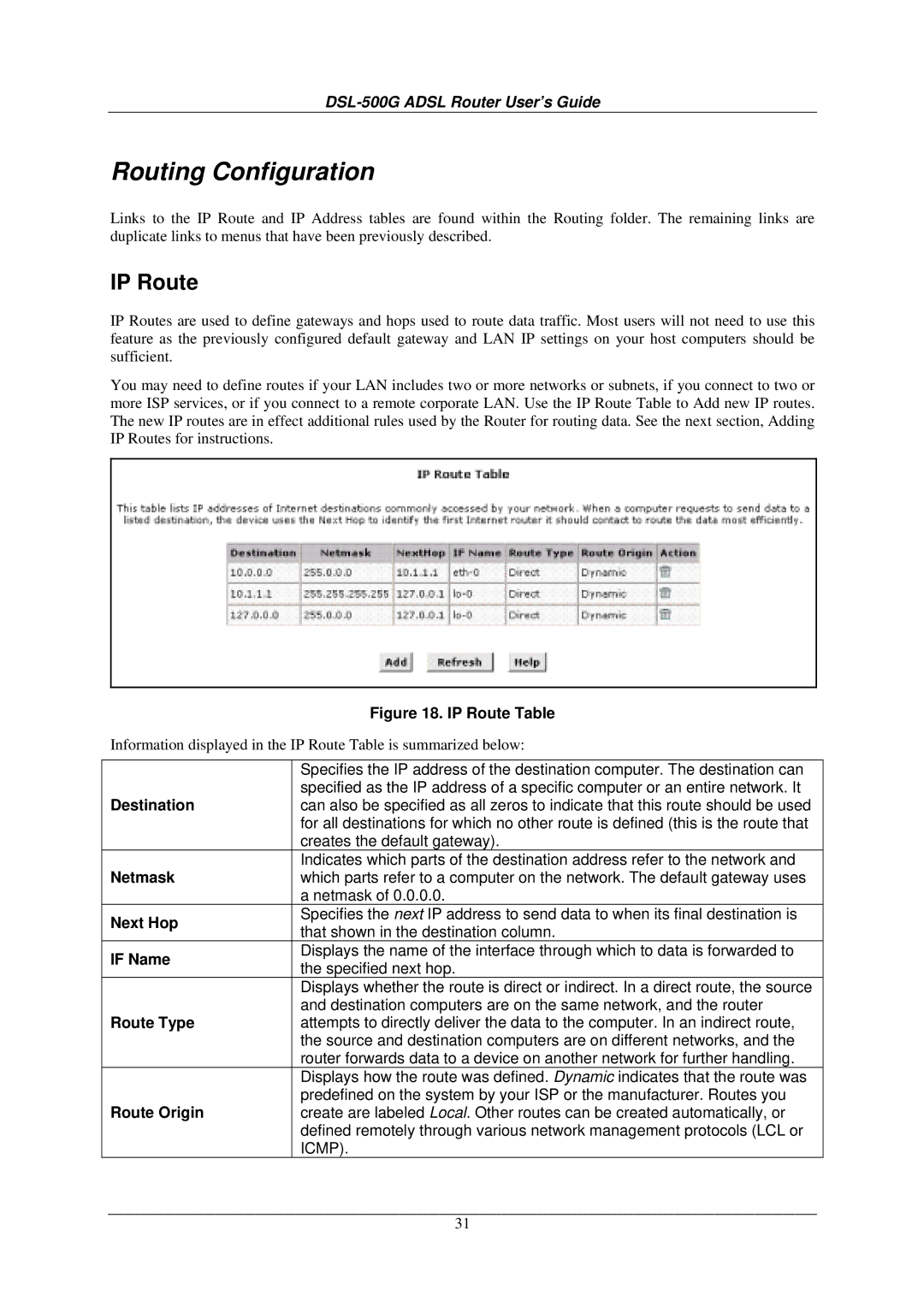
DSL-500G ADSL Router User’s Guide
Routing Configuration
Links to the IP Route and IP Address tables are found within the Routing folder. The remaining links are duplicate links to menus that have been previously described.
IP Route
IP Routes are used to define gateways and hops used to route data traffic. Most users will not need to use this feature as the previously configured default gateway and LAN IP settings on your host computers should be sufficient.
You may need to define routes if your LAN includes two or more networks or subnets, if you connect to two or more ISP services, or if you connect to a remote corporate LAN. Use the IP Route Table to Add new IP routes. The new IP routes are in effect additional rules used by the Router for routing data. See the next section, Adding IP Routes for instructions.
|
| Figure 18. IP Route Table | |
| Information displayed in the IP Route Table is summarized below: | ||
|
|
|
|
|
| Specifies the IP address of the destination computer. The destination can | |
| Destination | specified as the IP address of a specific computer or an entire network. It | |
| can also be specified as all zeros to indicate that this route should be used | ||
|
| for all destinations for which no other route is defined (this is the route that | |
|
| creates the default gateway). | |
| Netmask | Indicates which parts of the destination address refer to the network and | |
| which parts refer to a computer on the network. The default gateway uses | ||
|
| a netmask of 0.0.0.0. | |
| Next Hop | Specifies the next IP address to send data to when its final destination is | |
| that shown in the destination column. | ||
|
| ||
| IF Name | Displays the name of the interface through which to data is forwarded to | |
| the specified next hop. | ||
|
| ||
|
| Displays whether the route is direct or indirect. In a direct route, the source | |
| Route Type | and destination computers are on the same network, and the router | |
| attempts to directly deliver the data to the computer. In an indirect route, | ||
|
| the source and destination computers are on different networks, and the | |
|
| router forwards data to a device on another network for further handling. | |
|
| Displays how the route was defined. Dynamic indicates that the route was | |
| Route Origin | predefined on the system by your ISP or the manufacturer. Routes you | |
| create are labeled Local. Other routes can be created automatically, or | ||
|
| defined remotely through various network management protocols (LCL or | |
|
| ICMP). | |
|
|
|
|
|
| 31 |
|
